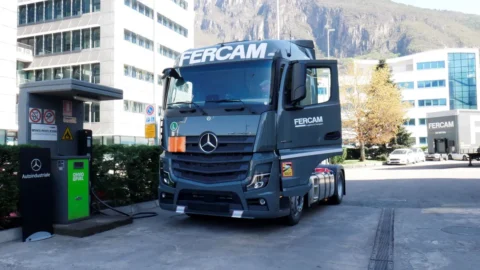They are applications open at the second call of "Up2Stars”, a program created by Intesa Sanpaolo in collaboration with Intesa Sanpaolo Innovation Center and dedicated to the enhancement and growth of innovative startups in Italy. The new edition will focus on Renewable Energy and Energy Efficiency.
“The energy transition represents one of the most important and pressing challenges for the country. With the second call of Up2Stars, we intend to intercept the best innovative startups operating in the renewable energy sector, so that they can accelerate this process", said Virginia Borla, executive director of business governance of Banca dei Territori Intesa Sanpaolo. And he added: “Intesa Sanpaolo encourages green investments by SMEs also through the Motor Italy Energy Transition programme, which makes 76 billion euros available for sustainable growth, and, by promoting the development of Renewable Energy Communities, helps to increase competitiveness of small and very small businesses and the economic, environmental and social benefits for the community”.
The second edition of “Up2Stars”
After the first call dedicated to the Watertech sector, which closed with 50 applications, the second call of "Up2Stars" is aimed at startups specializing in: new energy sources, smart solutions for energy efficiency, smart solutions for the recovery and reuse of energy and for CO2 capture.
La main novelty this year, explains a note, is the expansion of partnerships and the collaboration network which, in addition to Microsoft, Elite and Cisco, sees the involvement of the National Research Centers in which Intesa Sanpaolo participates as a founding member of the individual Foundations of reference, in addition to the Extended Partnerships and the 9 European Innovation Hubs (EDIH). There is also a new collaboration with Digit'Ed, a company specializing in higher education and digital learning. Applications may be submitted by 15 October 2023 Through the this page.
The analysis of the Intesa Sanpaolo Studies and Research Department
La energy crisis intensified by the war between Russia and Ukraine has changed the energy scenario. As the analysis highlights “Renewables, Smart Grids, Energy Communities, Hydrogen: synergies for sustainable growth" of the Intesa Sanpaolo Studies and Research Department, during 2022 an initial process of geographical diversification of natural gas supplies was undertaken, which however remains the central hub of the electricity and heat generation process. It is therefore essential to press the accelerator on the use of renewable energy sources (Fer) to preserve national energy security and, at the same time, control price volatility. The incidence of RES on the production of electricity in our country is around 40%, but the data on energy consumption covered with renewable sources require a further effort. To slow down a strong acceleration, the reduction in the pace of plant installations, linked both to excessively long authorization procedures and to the lack of incentives. An acceleration in the use of RES is also desirable in view of the challengers European goals for 2030. In line with the "Fit for 55" package, which provides for the reduction of greenhouse gas emissions by 55% by 2030, a binding target of 42,5% of final energy consumption from renewables has been set. To get closer to the goal, Italy will necessarily have to aim for doubling of installed capacity from Fer in less than 10 years.
Some issues remain open, such as the development of transport, storage and distribution systems for energy from renewable sources. The discontinuous nature of the production of:
- GSE, Statistical Report 2021 Energy from Renewable Sources in Italy.
- Source Eurostat.
- On 30 March last, agreement was reached at the European level on the definitive text of the Directive on renewable energies (Red III).
Smart Grid and Energetic Communities
To absorb the energy generated by the numerous plants and guarantee its efficient distribution, through integration with the existing infrastructures, it is necessary to strengthen and renew the current network according to the logic of Smart Grid. At the same time, energy storage is key to managing fluctuations in renewable energy production. THE storage systems, based on lithium batteries and other technologies, are in fact becoming more and more of a priority. A support to the achievement of the 2030 objectives can also come from the dissemination of Renewable Energy Communities (Cer). It is a new energy model that would allow maximizing the benefits deriving from the self-consumption of energy from renewable sources, bringing environmental and social benefits to all members of the community.
Hydrogen and CO2 capture
Il National recovery and resilience plan allocates significant funds both to support the CERs and to give birth to the renewable gas production chain. Fers offer good employment prospects in those sectors that use heat at low temperatures, but for highly energy-intensive sectors, the use of complementary technologies will also be essential, such ashydrogen and water capture and storage systems'carbon dioxide, which provide for the capture of CO2 emissions produced by industrial plants or power plants and storage in underground tanks or empty deposits. The captured carbon dioxide can then be reused in the fertilizer industry, in the production of CO2-based synthetic fuels, chemicals and building aggregates. Italy has defined its own hydrogen strategy with an initial allocation of over 3,6 billion from the Pnrr to promote its production, distribution and final uses. The sector is represented in Italy by a chain of very active and innovative SMEs aiming at the construction of the infrastructural network necessary for the development of the demand for hydrogen for large-scale mobility and as an energy vector for industry.





